Rodeo 101


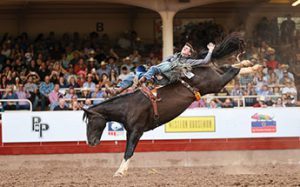
The rider sits directly on the horse, with only his rigging to hang onto. The cowboy’s boots must be above the break of the horse’s shoulders as they leave the chute. After the first jump, the cowboy matches the horse’s rhythm and rides as controlled as possible. He may not touch the horse, his equipment or himself with his free hand. If the ride lasts eight seconds, he is judged on his technique against the horse’s bucking strength.
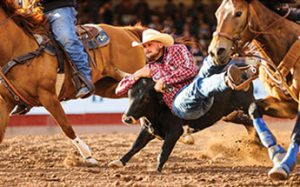
This is a coordinated effort between two mounted cowboys, the contestant and a hazer who controls the steer’s direction, as well as their horses. You’ll see the cowboys back into the box, the contestant nods, the chute gate opens and the steer gets a head start. As the steer wrestler draws even with steer, he dismounts from his horse, grasps the steer’s horns and digs in his boot heels for all he’s worth. He then wrestles the steer onto its side, and when he has the steer’s four legs pointing in the same direction, the clock stops.
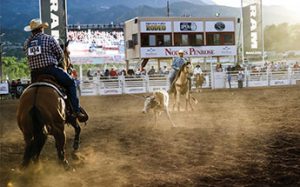
Partners work in close coordination as the steer again gets a head start. The header throws the first loop which must catch the steer’s head or horns (the horns are protected with a special wrap). He then moves to pull the rope taut and changes the direction of the steer. The heeler then catches both of the steer’s hind legs. When both ropes are taut and both horses face the steer, the time is recorded.
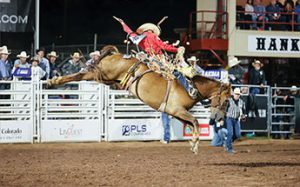
The cowboy’s boots must be above the horse’s shoulders when the chute gate opens. His only handhold is a six foot braided rope. His free hand can’t touch the horse, any equipment or himself. A ride lasting eight seconds is judged on difficulty and control.
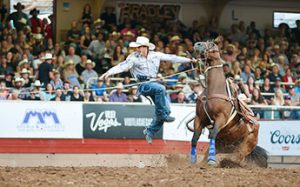
The roper backs his horse into the box, carrying a rope in one hand and a pigging string in his mouth. The calf gets a head start. The cowboy throws a loop over the calf’s head, his horse pulls the rope taut while the cowboy lays the calf down and strings together three legs using the pigging string. When he lifts his hands, the judge drops a flag to stop the clock. If the calf’s legs stay tied for six seconds, it’s a qualified run.
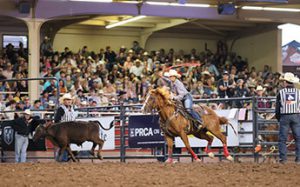
A mounted event that features a calf and one cowgirl. The cowgirl starts behind a taut rope called the “barrier.” When ready, the chute doors open, freeing the calf to run out into the arena. The calf triggers the release of the barrier for the roper, who pursues and must throw the rope in a loop around the calf’s neck. The cowgirl’s rope is tied to the saddle horn with a string. Once the calf has been successfully roped, the rope is pulled tight and the calf’s momentum breaks the string (typically fastened with a white flag to help it stand out). The breaking of this string marks the end of the run, and the fastest run wins!
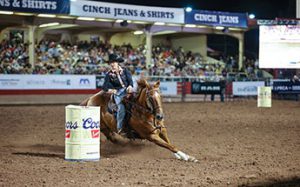
A rider can start right or left in this race against time to follow the cloverleaf pattern around three barrels. Once the rider crosses the electric eye, the clock begins and that same eye registers her time as she completes the race. Each barrel that is tipped over adds five seconds to the run.
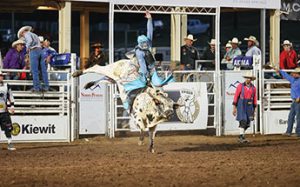
The bull rider may use only one hand to stay aboard during the eight-second ride. If he touches the bull or himself with his free hand, he receives no score. To stay aboard the bull, a rider grasps a flat braided rope, which is wrapped around the bull’s chest just behind the front legs and over its withers. One end of the bull rope, called the tail, is threaded through a loop on the other end and tightened around the bull. The rider then wraps the “tail” around his hand, sometimes weaving it through his fingers to further secure his grip. Then he nods his head, the chute gate swings open, and he and the bull explode into the arena.